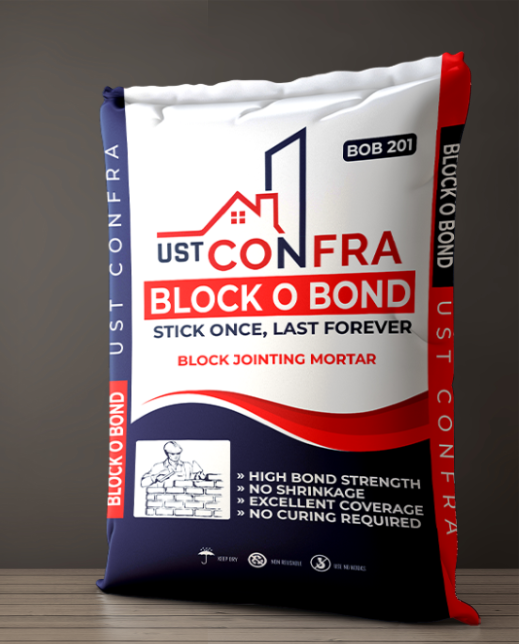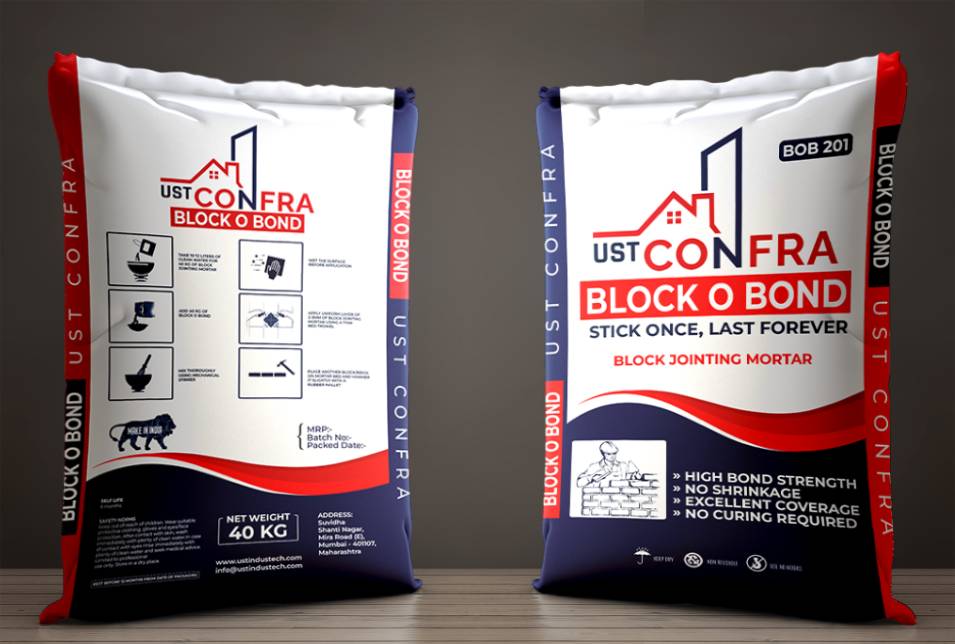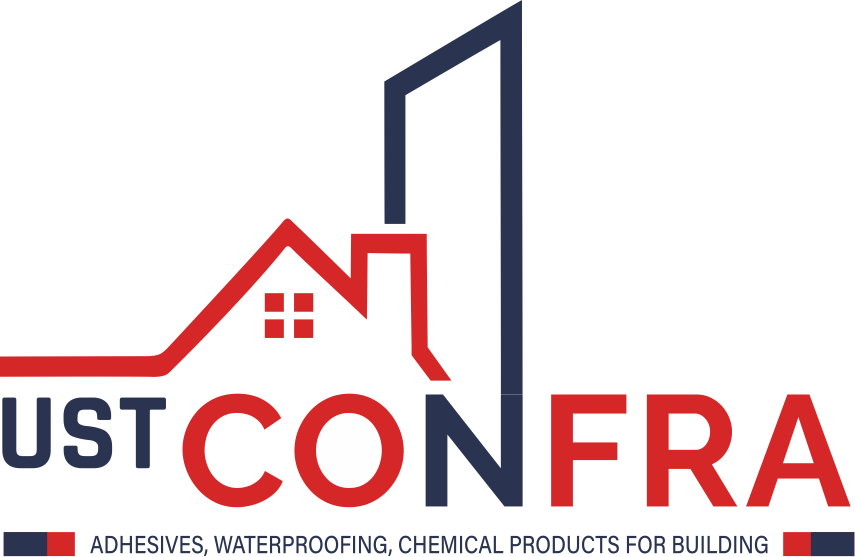Block Jointing Mortar – Block O Bond
Block Jointing Mortar – Block O Bond
Prodcut Name

Product Description :
UST Confra block joining mortar is a high strength thin adhesive for quick and firm laying of AAC Blocks, fly ash bricks, concrete blocks, etc with thin joints. It’s a factory-mixed mortar made up of cement, graded stones, blended with polymers to deliver high strength and water retention properties even when in thickness of 2 -3 mm. With improved compressive and tensile strength, it offers better value for money compared to other products.
Advantages
Increasing overall masonry strength & load-bearing capacity
Providing high compressive & flexural strength
Superior adhesive strength
Higher durability
Strong bond between the blocks
Technical Information
- Colour : Grey Powder mixture
- Dilution : 25-30% with water by weight
- Pot Life : 1.5-2 hours (Usuallv it is lesser)
- Coverage (600 mm x 200 mm AAC Blocks)* 1.8-2 m3/40 kg bag
- Pack Size : 40 KG 8, 50 KG
- Curing: Not Required
- Tensile Adhesive Strength: >041 MPa (as per ASTM – C1660)
- Coverage: 170 – 180 sqft (for 4″ thick blocks)
How To Apply:
- Block Jointing Mortar can be laying and joining of masonry units like Fly Ash block, ACC block, hollow, concrete blocks etc.
- Before application surface should be clean and free from dust, grease, oil and any other foreign material.
- Pre-wet the surface of the block before applying mortar. Allow excess water to drain off.
- Apply the material on the block evenly with trowel. For best results it is advisable to use notch trowel of 3 to 4 mm to have better contact and bonding.
- Application should be done by the angle between 35 to 45 degrees, using the right amount of pressure.
- Use fibre hammer to remove any air gaps in between blocks for proper jointing and alignment.
- Fill the gap between two blocks with the help of trowel and remove excess material.
- Mortar should be spread on all sides of the block in such way to maintain the bond thickness 2-3 mm.
- The coverage area however will depend upon the quality and evenness of the substrate, thickness of joints.


